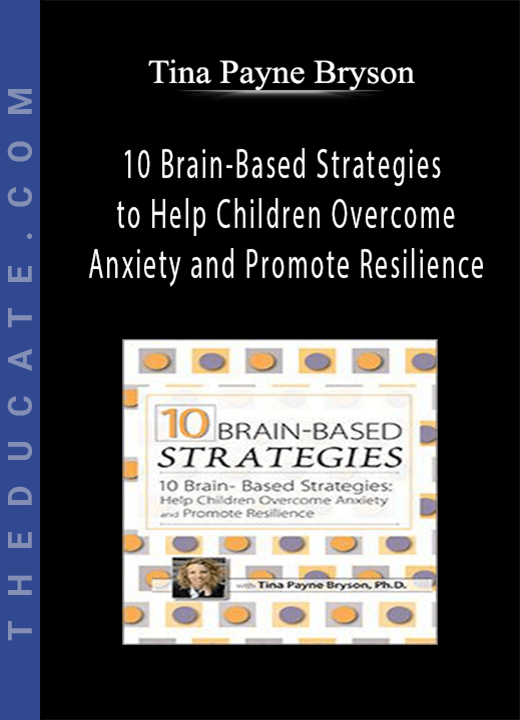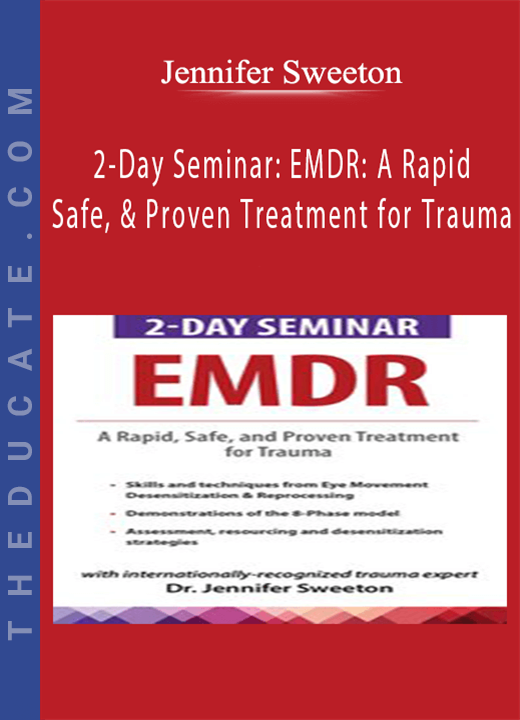Description
10 Brain-Based Strategies to Help Children Overcome Anxiety and Promote Resilience – Tina Payne Bryson
In this ninety-minute recording, best-selling author Dr. Tina Payne Bryson (co-author with Dan Siegel of The Whole-Brain Child and No-Drama Discipline) discusses the primary ways she brings the brain into her work with the children, adolescents, and parents who visit her office each week. Focusing on both the latest research and clinical application, Dr. Bryson will explain how she helps her young clients better understand themselves and their own brains, thus helping them overcome anxiety and develop resilience within themselves.
Using stories and case examples, Dr. Bryson explains ten simple, scientifically-grounded strategies that can help psychotherapists better understand the brains of the kids they work with, and communicate that understanding to parents and the children themselves so that kids can feel less anxious and more in control of their bodies and emotions.
10 Brain-Based Approaches for Children
- Connection between body, brain, and emotions, and what produces feelings of nervousness and fear.
- Learn to recognize anxiety and other negative emotions as messages sent by the body and brain.
- Use strategies and effective responses that “work for your brain and body.”
- Understand neural plasticity and how kids can affect their brains by understanding and responding to their anxiety.
- Describe the brain as an association machine, by understanding mental and neural associations, kids can more effectively respond to what they’re feeling.
- Help kids understand that the brain’s job is to get a need met, and recognize their anxiety as a signal that the brain needs some sort of shift.
- Demonstrate how nervous system arousal works, and how resilience is about remaining in the optimal window for wellbeing and happiness.
- Show how discipline and learning are guided by nervous system arousal, and how we determine at what point anxiety impairs this process.
- Introduce kids to the role mindfulness plays in addressing fear and anxiety.
- Teach tools of the mind and tools of the body, which allow children to overcome anxiety and build skills that help them control their anxious emotions and make good and healthy decisions.
- Demonstrate multiple approaches to helping anxious children comprehend fundamental facts about the brain and to understand how their own brains and nervous systems contribute to their overall perspective of their world and themselves.
- Describe and demonstrate how adults can use these approaches to teach children to help them take control of their emotions, be happier, feel less nervous, and make better decisions.
- Explain the importance of exploring and understanding the neurobiological activation behind difficult emotions and troubling behavior.
Neuroscience as an Approach to Understand Anxiety
- Neural plasticity
- Nervous system arousal
- Resilience and the optimal window for wellbeing and happiness
The Brain-Body-Emotion Connection
- What produces feelings of nervousness and fear
- Memory and its role in anxiety
Strategies to Help Kids Deal with Anxiety
- Anxiety as a message
- Mindfulness and other tools of the mind and body
Tag: 10 Brain-Based Strategies: Help Children Overcome Anxiety and Promote Resilience – Tina Payne Bryson Review. 10 Brain-Based Strategies: Help Children Overcome Anxiety and Promote Resilience – Tina Payne Bryson download. 10 Brain-Based Strategies: Help Children Overcome Anxiety and Promote Resilience – Tina Payne Bryson discount.







11 reviews for 10 Brain-Based Strategies to Help Children Overcome Anxiety and Promote Resilience – Tina Payne Bryson
There are no reviews yet.